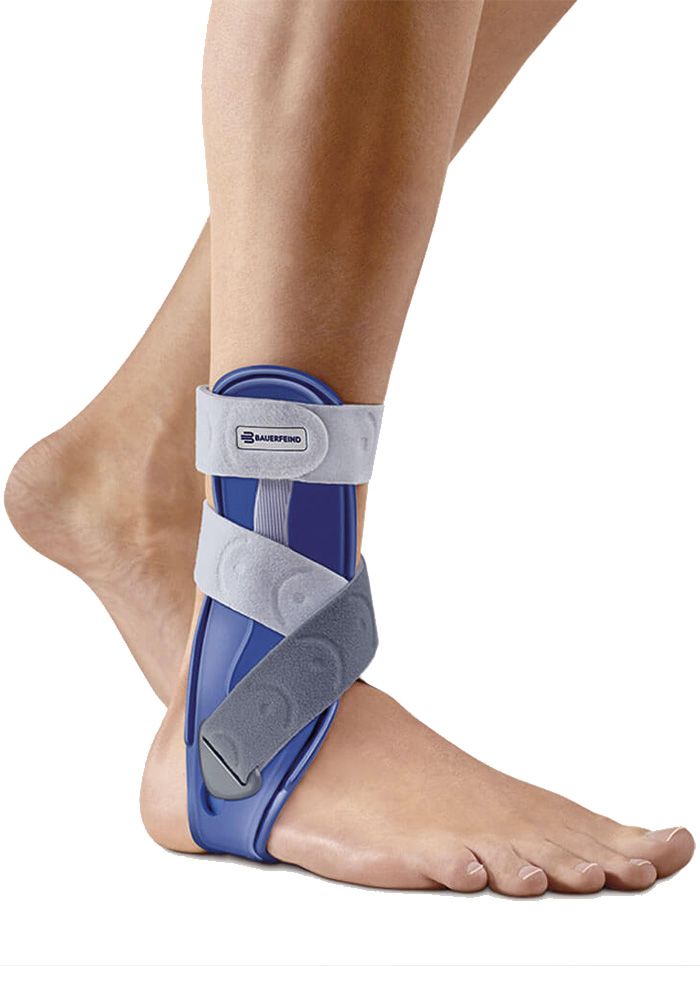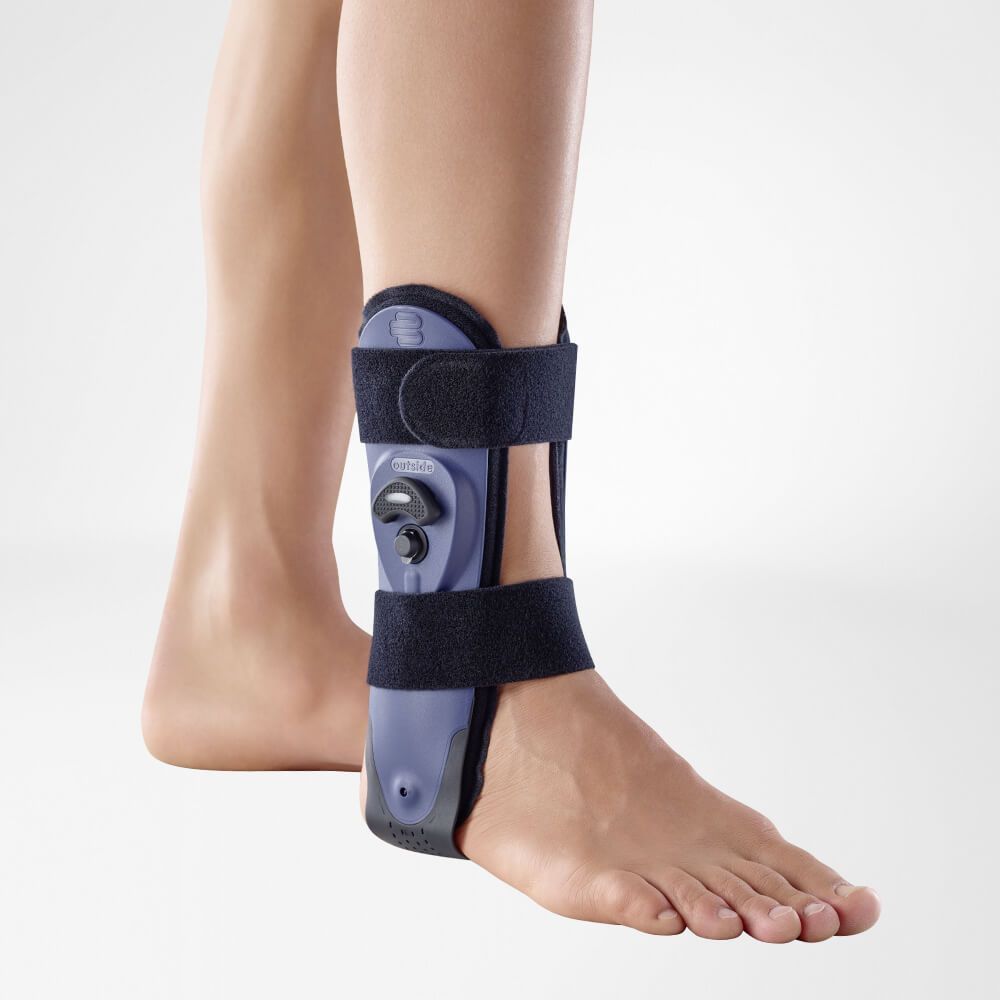Sprained Ankle
Suffering from a sprained ankle? At Podobrace, you’ve come to the right place. Here you’ll find a wide range of ankle braces for sprained ankles. Want more information about this condition? Feel free to read on. We’re happy to explain it to you.
What is a sprain?
The official term for a sprain or bruise is distortion.
How does a sprained ankle occur?
In most cases, a sprain happens due to a minor accident—after all, accidents can happen in the blink of an eye. This is especially true if your ankles are already somewhat weakened.

How long does it take to recover from a sprain?
A minor misstep or sports injury is never pleasant—and it could mean you’re unable to walk without pain or play sports for up to 8 weeks. To ease symptoms and potentially speed up the healing process, wearing an Achilles tendon brace can be a smart choice.
How do I know if I have a sprain?
First, it’s important to determine whether you truly have a sprained or bruised ankle. The ankle is stabilized by tendons, ligaments, and the joint capsule. With a sprain, you’ll usually feel a sudden, sharp pain on the inside or outside of the ankle. The most intense pain often subsides after a few minutes, allowing you to walk again carefully. Swelling typically appears under or on the ankle and may later move to lower areas such as the heel, toes, or outer edge of the foot.
Sometimes, you might also see bruising on the back of the foot. In more serious cases, the pain remains intense, and you may not be able to stand on your foot after the injury. This could indicate a break or tear in the ankle. If this is the case, you should contact your GP or the Emergency Department immediately. The same applies if you heard a popping sound or if your lower leg, ankle, or foot appears misaligned. In such cases, an X-ray will be needed to determine whether a fracture is present.

What can I do to relieve sprain pain immediately?
- Apply a cold pack or ice cubes to the area right away. Repeat 4 to 5 times a day.
- Keep your ankle elevated.
- Take ibuprofen or paracetamol to relieve the pain.
- Try walking again, as movement can support recovery. Be sure to place your foot straight when walking. If the pain worsens while walking, it’s best to stop.
- Cycling or regularly moving your foot back and forth can help prevent stiffness in the joint.
Build up gradually
Increase activity slowly. In some cases, it may be helpful to consult a specialist. It can take 4 to 5 days before you’re able to stand on your foot again. By then, the pain should have reduced enough to make this possible. If not, it’s advisable to contact your doctor. If you can stand after a few days, it’s likely a mild sprain. Most people are able to function normally again 6 to 8 weeks after a sprain, and return to sports after 8 to 12 weeks. It’s recommended to avoid sports for 2 to 3 weeks, and only resume when both pain and instability are completely gone. It’s also wise to wear ankle support to protect the joint during recovery.

Active Ankle T2 Sports Ankle Support

Bauerfeind MalleoLoc Ankle Support

Bauerfeind MalleoTrain S Ankle Support

Bauerfeind AirLoc Ankle Support
Protection level 3
Gladiator Sports Lightweight Ankle Support with Straps

Morsa ThermoCY Lightweight Ankle Football Support

Dunimed Premium Ankle Support (Black & Beige)

- Physiotherapist
- Sports podiatrist
- Manual therapist
- Podopostural therapist
- Myofascial dry needling specialist


